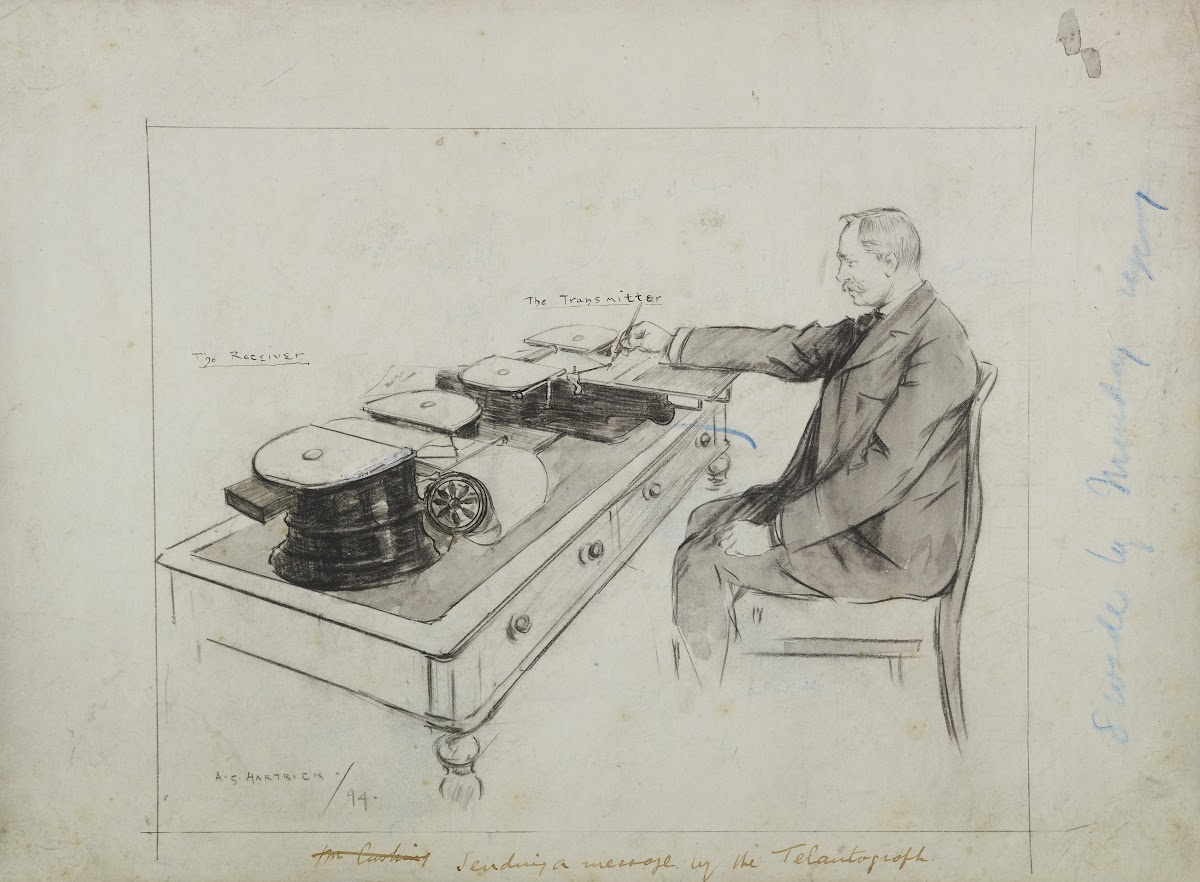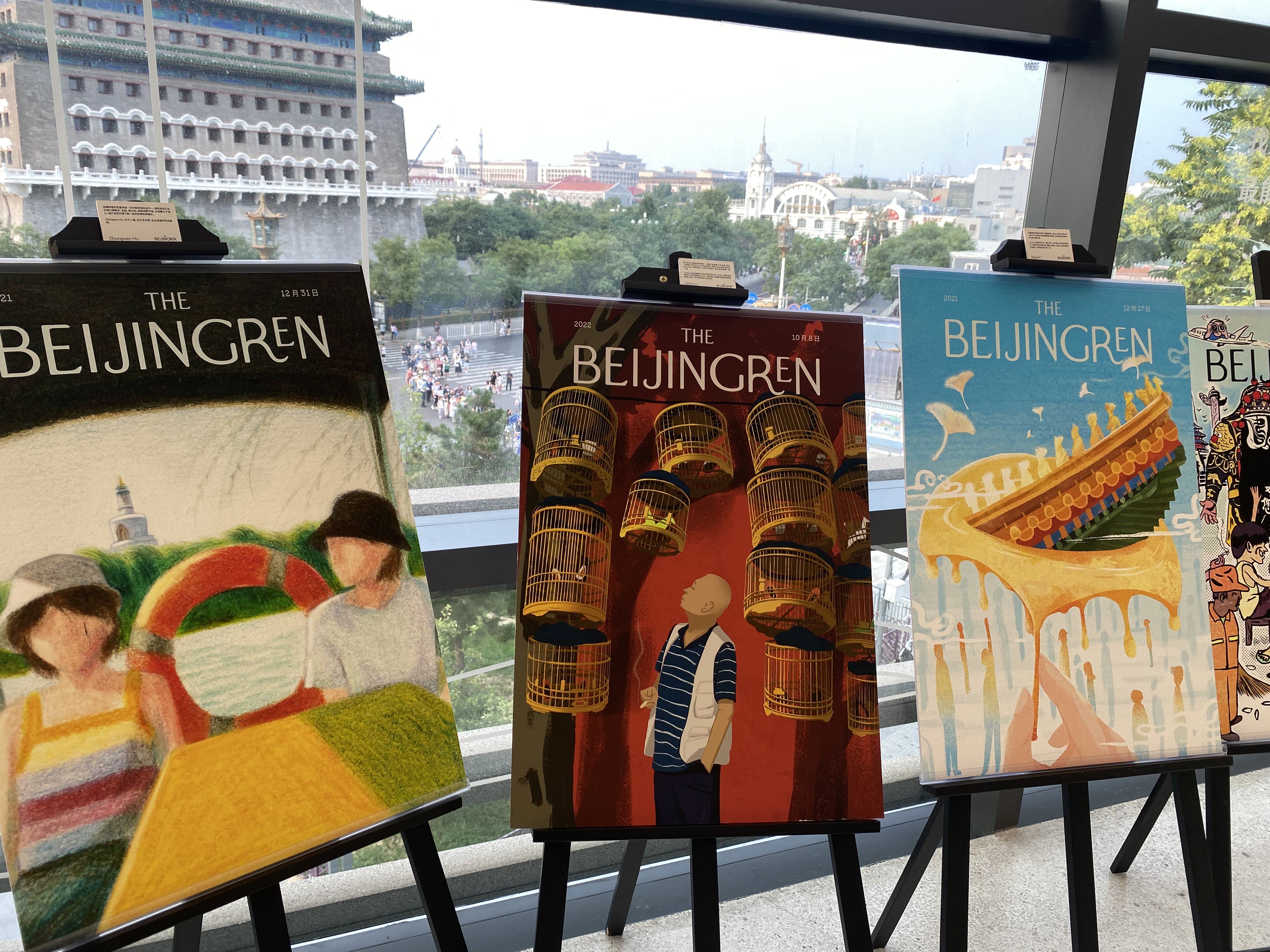这个假期最有价值的事情,是简单入门了达芬奇,这是个自带方法论的视频剪辑软件,剪辑流程给你安排的明明白白,可惜我没有啥需要剪辑的视频,或许以后会有吧(给我拍的照片加点 bgm 就当视频了)。
Tag: 创意
Dkphhh's MurmurCreated@ Fri Oct 06 2023 00:18:00 GMT+0800 (China Standard Time)
Dkphhh's MurmurCreated@ Mon Aug 21 2023 00:41:00 GMT+0800 (China Standard Time)
evil 倒过来就是 live
手写电报机

「手写电报机」(telautograph)是现代电报的古典雏形,也是一个非常有想象力的发明。
- 它有一个发送端和一个接收端,发送端的笔捆了根线。笔在书写的时候,会带动线运动,产生电流。接收端也有一根笔和控制笔的线,在接收到电流以后就能复现发送端笔的运动轨迹,实现「自动书写」(autograph)。
- 它的技术原理和电话差不多,如果仅仅是为了通信交流,包括电话在内,同期可以取代他的技术太多了。但这丝毫不妨碍「手写电报机」散发出来的想象力,一支能自己动的笔,怎么看都像是魔法!
- 它的单词构成也非常贴切,tele+auto+graph,连在一起就是远距离自动书写的意思,也可以理解成「远程亲笔签名」。
滚轮行李箱与创新悖论
直到 1970 年代,滚轮行李箱才正式发明、上市销售;而拉杆箱的发明,得等到 1987 年。
让人感到疑惑的是,滚轮行李箱背后的技术非常简单。它不像登月或拍立得照相机,外行难以想象如何实现。一个没有工程背景的普通人,一旦有了「滚轮行李箱」这个想法,用上几个月,似乎也能完成工程实现。
为何那么多年,数以百万计的聪明人在机场搬过行李,却迟迟没想过给箱子加上轮子?
时间回到 1970 年,行李箱公司高管 Bernard D. Sadow 携全家出国度假,在机场里,Sadow 要负责 2 个 27 英寸的行李箱,非常沉重。这时,他注意到,一名工人正在使用一个有轮子的推车运送一台重型机器。Sadow 自然而然地想到,为什么不为行李箱装上轮子呢?
回国后,Sadow 尝试设计带轮的行李箱。他的做法是,在箱子上装上 4 个轮子和皮带,然后用皮带拖着行李箱,有点像牵着狗。
一个可能的原因
好玩的是,Sadow 向百货公司兜售新发明时,头几个月遭到一致拒绝,因为百货公司认为使用滚轮行李箱「有损男子气概」。商人们揣测,男性顾客们会觉得,拖着滚轮行李箱让自己显得懦弱,而出行的女性都只需要丈夫搬行李箱。
「有损男子气概」的担忧有现实性。早在 1928 年,艺术家 Anita Willets-Burnham 就制作了有轮行李箱,自己使用,让环球旅行变得更轻松。而她家里的「男主人」Alfred Burnham 却宁愿扛着行李,并指责她,「你的行李箱上有轮子,你的头脑里也进了轮子!」
回到 1970 年代,当 Sadow 最终说服梅西百货尝试销售,行李箱立马变得大受欢迎,其他百货公司立即跟风。
这印证着 Paul Graham 的话,「一个好的新想法往往(事前)在大多数人看来都是糟糕的,不然别人早就去尝试了。所以,你要寻找的是那些乍看很疯但实则正确的想法。」
source: https://havefun.zhubai.love/posts/2294890039542419456
Dkphhh's MurmurCreated@ Tue Jul 25 2023 12:49:00 GMT+0800 (China Standard Time)
直到 1970 年代,滚轮行李箱才正式发明、上市销售;而拉杆箱的发明,得等到 1987 年。 让人感到疑惑的是,滚轮行李箱背后的技术非常简单。它不像登月或拍立得照相机,外行难以想象如何实现。一个没有工程背景的普通人,一旦有了「滚轮行李箱」这个想法,用上几个月,似乎也能完成工程实现。 为何那么多年,数以百万计的聪明人在机场搬过行李,却迟迟没想过给箱子加上轮子? 时间回到 1970 年,行李箱公司高管 Bernard D. Sadow 携全家出国度假,在机场里,Sadow 要负责 2 个 27 英寸的行李箱,非常沉重。这时,他注意到,一名工人正在使用一个有轮子的推车运送一台重型机器。Sadow 自然而然地想到,为什么不为行李箱装上轮子呢? 回国后,Sadow 尝试设计带轮的行李箱。他的做法是,在箱子上装上 4 个轮子和皮带,然后用皮带拖着行李箱,有点像牵着狗。
一个可能的原因: 好玩的是,Sadow 向百货公司兜售新发明时,头几个月遭到一致拒绝,因为百货公司认为使用滚轮行李箱「有损男子气概」。商人们揣测,男性顾客们会觉得,拖着滚轮行李箱让自己显得懦弱,而出行的女性都只需要丈夫搬行李箱。 「有损男子气概」的担忧有现实性。早在 1928 年,艺术家 Anita Willets-Burnham 就制作了有轮行李箱,自己使用,让环球旅行变得更轻松。而她家里的「男主人」Alfred Burnham 却宁愿扛着行李,并指责她,「你的行李箱上有轮子,你的头脑里也进了轮子!」 回到 1970 年代,当 Sadow 最终说服梅西百货尝试销售,行李箱立马变得大受欢迎,其他百货公司立即跟风。 这印证着 Paul Graham 的话,「一个好的新想法往往(事前)在大多数人看来都是糟糕的,不然别人早就去尝试了。所以,你要寻找的是那些乍看很疯但实则正确的想法。」 来源:登月、拉杆箱与创新悖论
Dkphhh's MurmurCreated@ Fri Jul 21 2023 00:54:00 GMT+0800 (China Standard Time)
「手写电报机」(telautograph)是现代电报的古典雏形,也是一个非常有想象力的发明。
- 它有一个发送端和一个接收端,发送端的笔捆了根线。笔在书写的时候,会带动线运动,产生电流。接收端也有一根笔和控制笔的线,在接收到电流以后就能复现发送端笔的运动轨迹,实现「自动书写」(autograph)。
- 它的技术原理和电话差不多,如果仅仅是为了通信交流,包括电话在内,同期可以取代他的技术太多了。但这丝毫不妨碍「手写电报机」散发出来的想象力,一支能自己动的笔,怎么看都像是魔法!
- 它的单词构成也非常贴切,tele+auto+graph,连在一起就是远距离自动书写的意思,也可以理解成「远程亲笔签名」。
[2025-08-27_13-25-00](译文[[2023-08-12-21-31|诚如所思|文摘#34]])里提到的「手写电报机」发明于 1888 年,发明者是 Elisha Gray,他也是电话的共同发明者之一。这个发明在当时并没有得到广泛应用,但它的概念和技术为后来的传真机和数字手写板奠定了基础。
Dkphhh's MurmurCreated@ Thu Jul 06 2023 21:57:00 GMT+0800 (China Standard Time)
这算借鉴,还是抄袭?

Dkphhh's MurmurCreated@ Sun Apr 02 2023 14:22:00 GMT+0800 (China Standard Time)
本以为是一个没有用的功能,现在只有一个人。突然体会到了它的价值。创造氛围需要 make some noise

Dkphhh's MurmurCreated@ Sat Apr 01 2023 16:12:00 GMT+0800 (China Standard Time)
一个经典构图

Dkphhh's MurmurCreated@ Fri Mar 24 2023 15:25:00 GMT+0800 (China Standard Time)
收集者还是创造者?我是收集者。